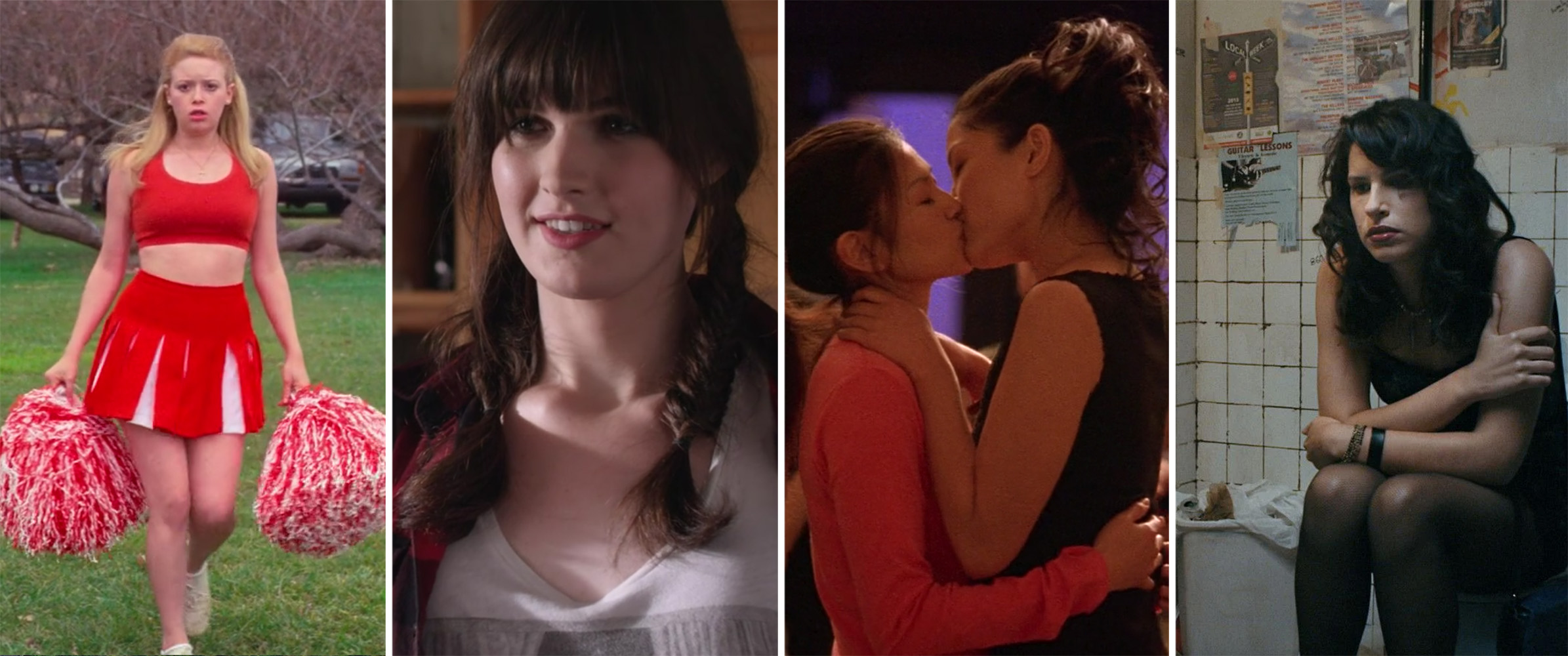
Unit Overview: Comedy
Welcome to Unit 1: Comedy! In this unit, students will examine four films: But I’m A Cheerleader, Boy Meets Girl, Saving Face and Appropriate Behavior.
But I’m A Cheerleader
Because this is the first week of the course, Day 1 includes the introduction of some course systems and materials we will use throughout this course. On Day 1, I included a teacher model for a student-led scene analysis presentation, so that you could begin asking students to do scene analysis presentations as early as week 2. If you plan to rearrange the sequence of this course, you may want to move some of these introductory materials to whatever you choose to be the first week. Brief YouTube clips are also included in this week’s lessons to help familiarize students with some of the concepts that emerge in But I’m A Cheerleader and are relevant throughout the course, such as heteronormativity, sexual orientation, and gender identity.
In addition, students will learn some of the conventions of romantic comedy as a genre, examining how But I’m A Cheerleader utilizes or subverts those tropes. Students will also examine their first queer theory text of the course: brief excerpts from Jack Halberstam’s book, The Queer Art of Failure. They will close-read the film’s final scene to examine how it illustrate’s Halberstam’s argument regarding “queer failure” and its value.
Readings to accompany But I’m A Cheerleader include:
- Day 2: Tamar Jeffers McDonald, Introduction to Romantic Comedy: Boy Meets Girl Meets Genre
- Day 3: Jack Halberstam, The Queer Art of Failure (Excerpts)
Boy Meets Girl
Students will examine this film alongside excerpts from Julia Serano’s book, Whipping Girl: A Transsexual Woman on Sexism and the Scapegoating of Femininity. Using Serano’s text, students will consider some of the longstanding tropes and stereotypes in media depictions of transwomen, and explore whether and how Boy Meets Girl subverts those stereotypes. Students will also examine how the film depicts and critiques cisgender privilege. I have also included a “Trans 101” YouTube video to introduce key terminology related to gender identity.
Readings to accompany Boy Meets Girl include:
- Day 2: Julia Serano, Whipping Girl, Chapter 2: “Skirt Chasers: Why the Media Depicts the Trans Revolution in Lipstick and Heels”
- Day 3: Julia Serano, Whipping Girl, Chapter 8: Dismantling Cissexual Privilege
Saving Face
This week, we are examining two film studies texts on Saving Face, rather than a film studies and queer theory text, because unlike But I’m A Cheerleader and Boy Meets Girl, there has been a fair amount of scholarship on this film. Both of the texts we will be examining address the relationship between Wil and Ma, and their “shared marginality” (Wong 330) due to their non-normative sexualities.
Readings to accompany Saving Face include:
- Day 2: Alvin Ka Hin Wong, “From the Transnational to the Sinophone: Lesbian Representations in Chinese-Language Films”
- Day 3: Qijun Han, “Diasporic Chinese Family Drama Through A Transnational Lens: The Wedding Banquet and Saving Face.”
Appropriate Behavior
Students will evaluate and respond to Chloe Benson’s argument about how Desiree Akhavan’s use of editing, narrative structure and dialogue enables Appropriate Behavior to resist bisexual invisibility. Then students will contextualize Appropriate Behavior with Maria San Filippo’s assessment of bisexual representation in film and television, as well as and her concept of “compulsory monosexuality.” Students will examine how the film resists familiar narratives and formal conventions that are common in media representations of bisexuality.
Readings to accompany Appropriate Behavior include:
- Day 2: Chloe Benson, “Film Review: Appropriate Behavior”
- Day 3: Maria San Filippo, “The Politics of Fluidity: Representing Bisexualities in 21st-Century Screen Media”
Unit 1 Response Essay
As always, feel free to edit or replace this prompt with one that would best fit your course. Here is a suggested prompt.
Consider the concepts we have addressed in this unit, such as heteronormativity, cisgender privilege, trans representation, queer diasporic identities, or compulsory monosexuality. Choose a film or television show from the list below, or consult your teacher about an alternate film choice. Using at least one source we’ve examined in this unit, write an essay of at least four pages in which you examine how the director’s use of cinematic techniques relates to one of the concepts we have examined. Try to address no more than two scenes from the film in your analysis. Remember to provide sufficient descriptions of the scenes you are examining, and analyze them using the language on your film studies vocabulary handout. Be sure to include full citations for all sources. Possible films or television to examine include:
- Booksmart (2019)
- Edge of Seventeen (1999)
- Genera+ion (2021), Episodes 1 and 2
- The Half of It
- The Kids are Alright (2010)
- Tangerine (2015)
- Transparent (2014), Episodes 1 and 2
- The Wedding Banquet(1992)